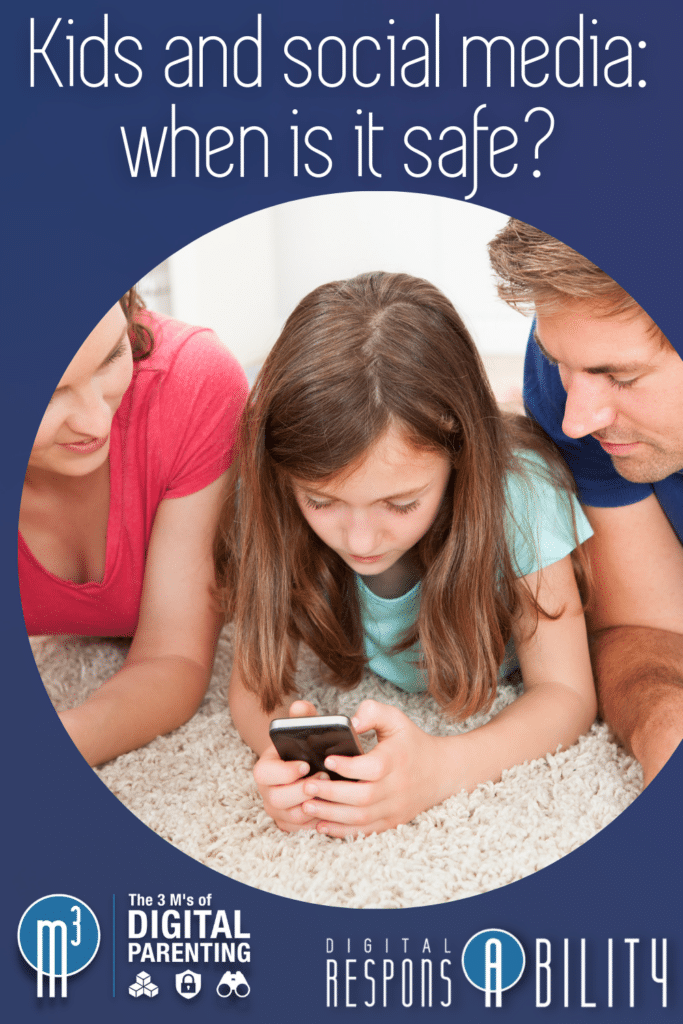Kids and social media: when is it safe?
Q. Should I let my young child use social media like Facebook Messenger Kids?
During the pandemic when kids were stuck at home and deprived of in-person socialization, many parents allowed their children to use social media earlier than they would have otherwise. Children as young as five have even gotten a taste of social media if they’ve used educational software with built-in communication features for school, such as Zoom, Google Docs, and other tools that encourage remote collaboration.

All of this makes social media feel natural and “normal” for young kids — whereas before the pandemic most parents waited until their kids were preteens or even until 13 (the age of consent for most of these apps). Now, if you have a child between the ages of 5 and 10 whose pals are using “kid-friendly” social media such as Facebook Messenger Kids, you may be wondering whether you should let your kid in on the fun and what controls to put in place to make it safe and positive. Here are some issues to weigh as you make your decision.
It’s OK to say no.
Even if you do everything “right,” such as keeping tabs on who your child is friending, what they’re sharing and posting, and even how they’re feeling about their online communication, social media can still lead to problems — including excess screen time. It can also require time and effort on your part. If you don’t want to deal with these potential issues, there’s no reason to sign up for it.
Instead, try other fun tech-related experiences, such as listening to podcasts, playing interactive games with a home assistant such as Echo, or using an e-reader. In other words, distract your child with another activity that helps them feel engaged with the world, but without the risks social media can bring.
It’s wise to be cautious.
Research on how social media impacts children indicates that some are more negatively affected by it than others. You can’t always determine how it will make your kids feel. If you sense that your child tends to be sensitive, needs more social scaffolding, and/or simply does better with more face-to-face interactions, then it’s wise to hold off.
Instead, try doing social media together so you can model healthy habits, behaviors, and norms. You can record yourselves performing a dance, experiment with photo filters, and watch tutorial videos together.
Social media is a part of gaming.
Research shows that social media for some kids centers around games. They report making new friends and strengthening friendships while they’re building new worlds. But gaming talk can be raunchy and create a negative environment. Even so, studies indicate that online gaming relationships can be so vital that shutting them down can have dire consequences for those who have a gaming community.
Instead, teach your child to have high standards for the kinds of language and environment they are willing to tolerate. Help them use in-game settings that limit who can contact them in a game, and restrict them to friends or friends of friends. Coach your child to reject negativity and only play with others who conduct themselves respectfully. You can also discuss the importance of “time and place.” There’s a time and place for the kind of trash-talking that happens in games — and it can be a fun way to blow off steam with friends. But it’s inappropriate to bring that kind of talk into other situations. Finally, playing games with your child is an excellent way to set an example of appropriate conversation and behavior — as well as have fun.
Start slow.
If you decide to allow social media, keep your child’s online social circle small and set limits on the amount of time they can spend in virtual hangouts — including where and when it’s OK to go online. You may prefer that your child only go online in the public areas of your home so you can keep an eye on them. You may also want your child to wait until after they’ve finished their chores, homework, and spent time outdoors. Establish these parameters as well as consequences for when your rules aren’t followed.
The online environment will stimulate new thoughts and feelings, so check in frequently to find out how they’re faring. Ask questions that promote a growth mindset, such as “what have you created?”, “what have you learned?”, “what are you proud of?”, and “what would you do or say differently next time?”.
Beware of social media “creep.”
Yes, there are creeps on social media, but the kind of “creep” we’re talking about here is when kids outgrow, say Messenger Kids and want to get on TikTok. And then Snapchat. And then Instagram. Like giving a mouse a cookie, kids who get social media will eventually want ALL the social media. But each platform comes with its own set of rules and responsibilities and they can each invite new problems and become a challenge for parents to manage. Again, try to go slow. Help them to understand the responsibility they are taking on with every new platform.
Make sure your child knows to always ask first before downloading anything. Explain you’re willing to discuss a new request for a new platform, but you want to take some time to review it first before saying yes. Read product reviews from an independent source such as Common Sense Media. Test out the app yourself and learn which settings make it safest. If you have your own account, you can stipulate that your child must connect with you on the platform so you can keep an eye on their interactions. Try to figure out ways that you and your child can enjoy the app together so you can continue to model appropriate behavior and positive engagement.